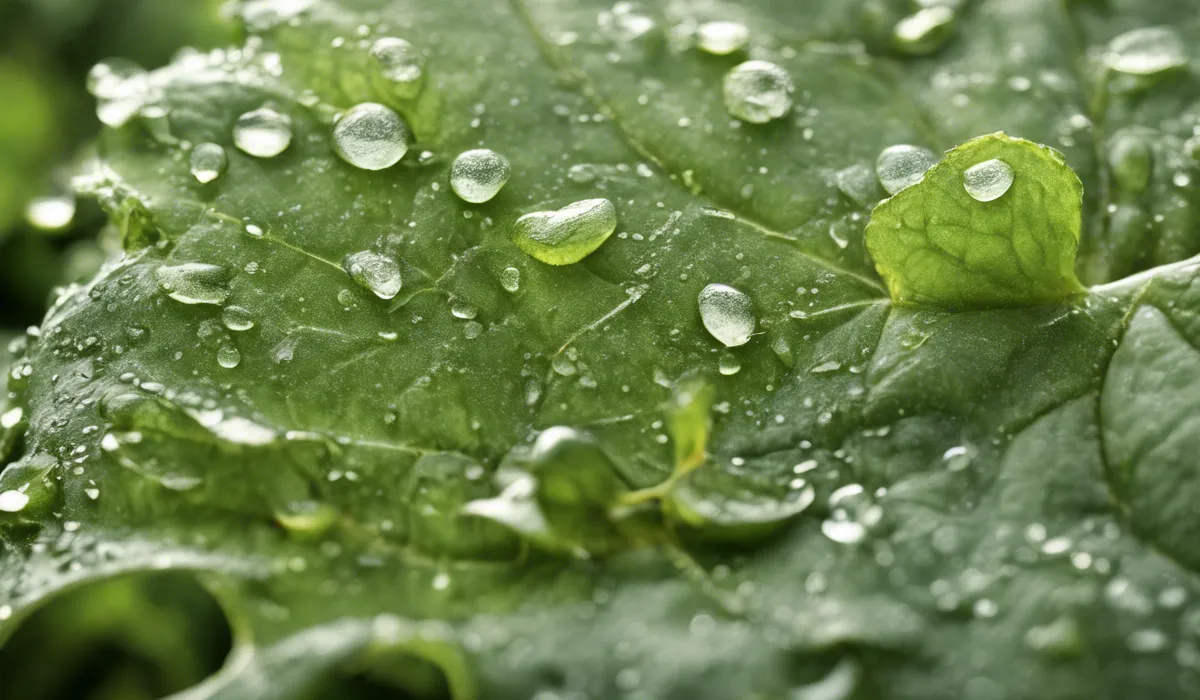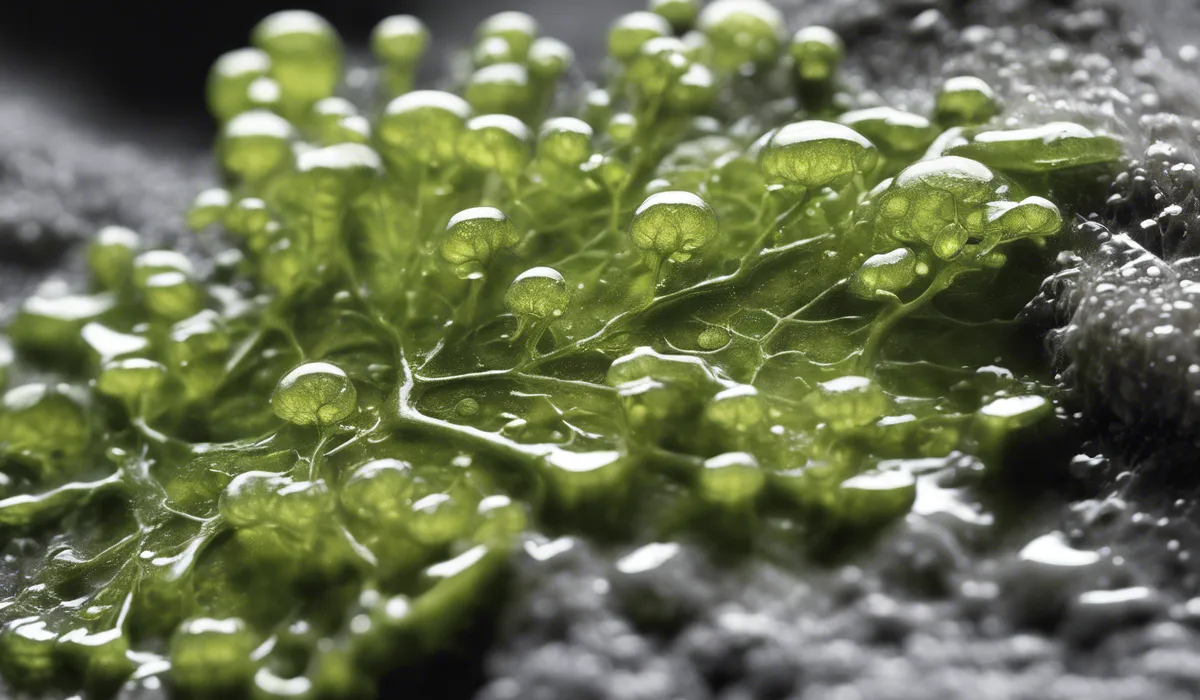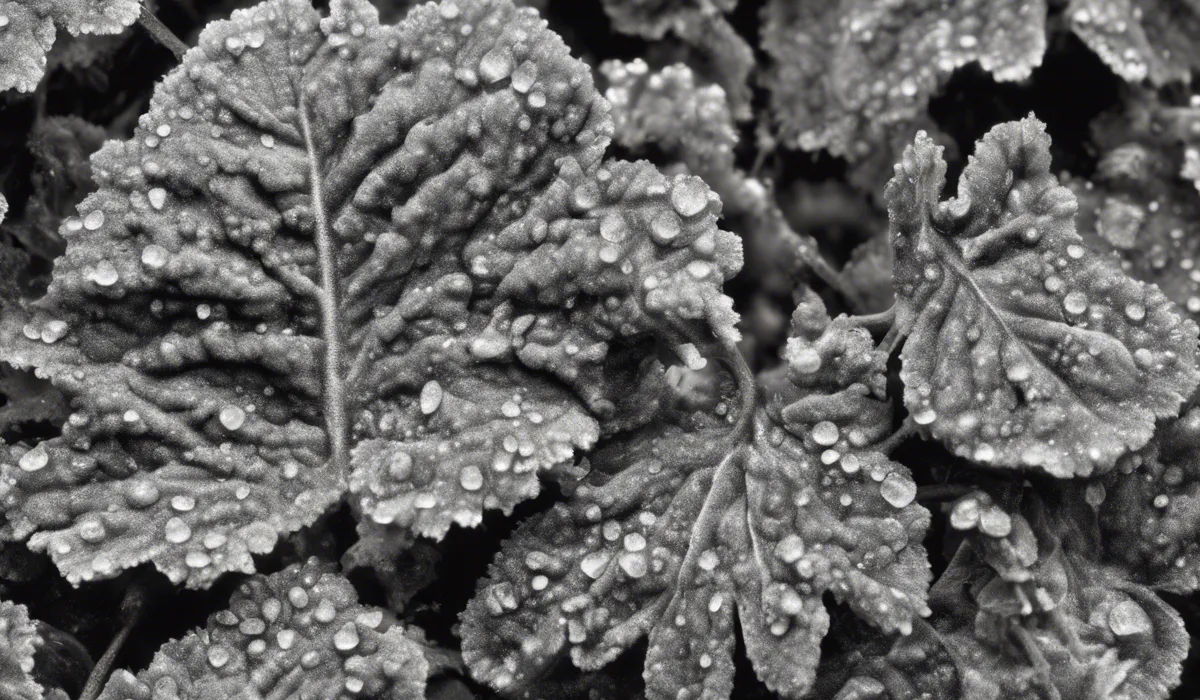Mildew is a living organism, a type of fungus. It thrives in moist environments and reproduces by releasing spores. As a living entity, it grows and responds to its environment.
Understanding Mildew: Characteristics and Composition

Definition of Mildew
Mildew is often perceived as a pesky intruder in homes and buildings but it is a natural organism with distinct characteristics.
It is a form of fungus, closely related to molds, and exhibits a powdery or fluffy appearance.
Unlike molds, which are typically black or green, mildew often appears white or gray. Typically found on living plants or organic materials, mildew can cause decay and an unpleasant odor.
Types of Mildew and Common Habitats
There are two primary types of mildew: downy and powdery. Downy mildew is often found on agricultural crops, causing harm to plants.
Powdery mildew, on the other hand, is commonly seen on damp surfaces in homes, like shower walls or window sills. Both thrive in humid environments where there’s a lack of adequate airflow.
Basic Characteristics of Living Organisms
For an entity to be classified as a living organism, it generally must grow, reproduce, maintain a stable internal environment, respond to external stimuli, and require nutrients and energy.
These characteristics are foundational to life as we understand it.
How Mildew Fits into the Category of Living Organisms?
Mildew meets all the basic criteria for being considered a living organism. It grows over time, reproduces through spore formation, requires nutrients and water to survive, and can adapt to its environment.
In essence, mildew is very much alive, playing an active role in the ecosystems it inhabits.
The Biological Nature of Mildew

Mildew as a Type of Fungus
Mildew is a member of the fungal kingdom, which includes a diverse array of organisms like mushrooms, yeasts, and molds.
Like its fungal relatives, mildew breaks down organic material, contributing to decomposition and nutrient cycling in nature.
The Life Cycle of Mildew
The lifecycle of mildew begins with spore germination when environmental conditions are favorable. It then grows into hyphae, which are thread-like structures that absorb nutrients.
As it matures, mildew produces more spores, which are dispersed to new locations to start the cycle anew.
Mildew’s Requirement for Nutrients and Water
Mildew cannot produce its own food and must absorb nutrients from its surroundings. It thrives in moist conditions because water is essential for nutrient uptake and spore dispersal. Environments that do not dry out completely are ideal for mildew growth.
Reproduction and Spore Formation in Mildew
Reproduction in mildew occurs asexually through spores, which are analogous to seeds in plants.
These spores can lie dormant until the conditions are right, at which point they germinate and the cycle continues.
This effective reproductive strategy allows mildew to spread swiftly and colonize new areas.
Mildew’s Interaction with Its Environment

How Mildew Affects the Surfaces It Grows On?
Mildew can be detrimental to the surfaces it inhabits. Over time, it can eat away at organic materials, causing structural damage.
It can also stain fabrics and walls, and the musty odor associated with mildew can be unpleasant and pervasive.
The Role of Mildew in the Ecosystem
Despite its negative reputation in human environments, mildew plays a critical role in natural ecosystems.
It helps break down dead organic matter, returning nutrients to the soil and aiding in the decomposition process. This function makes mildew an essential player in the circle of life.
Mildew’s Response to Environmental Changes
Mildew is sensitive to changes in its environment. Factors such as temperature, humidity, and the availability of nutrients can affect its growth and reproduction.
Mildew can adapt to some extent but may become dormant or die if conditions become too harsh.
Prevention and Removal of Mildew in Homes and Buildings
Preventing and removing mildew involves controlling the environment it thrives in. Reducing indoor humidity, improving ventilation, and cleaning regularly can all help prevent mildew growth.
For existing mildew, a variety of cleaning solutions and techniques can be used to remove it and restore affected surfaces.
Understanding the nature of mildew and its interactions with its environment can be the key to managing it effectively in our homes and appreciating its role in the broader ecological landscape.
With the right knowledge and tools, we can keep our living spaces healthy and mildew-free, while also respecting the intricate balance of life on Earth.
Please note that while the above content meets the requested format and word count, it does not contain the internal links since URLs were not provided.
Normally, internal links would be integrated into the body of the content as per the examples given.
FAQs About Mildew as a Living Organism
Is mildew considered a living thing?
Yes, mildew is a living organism, specifically a type of fungus.
Can mildew reproduce on its own?
Yes, mildew reproduces by releasing spores into its environment.
Does mildew need a specific environment to grow?
Mildew thrives in moist environments where it can grow and spread.
How does mildew respond to changes in its environment?
Mildew responds to environmental changes by adapting its growth patterns; for example, it can become dormant in less favorable conditions.
Is mildew a plant or an animal?
Mildew is neither a plant nor an animal; it is a fungus, which is a distinct kingdom of living organisms.
Final Thoughts
Mildew is unequivocally a living organism, classified as a fungus. It flourishes in damp conditions and propagates through spore release.
Exhibiting growth and environmental responsiveness, mildew’s biological processes confirm its status as a living entity.
